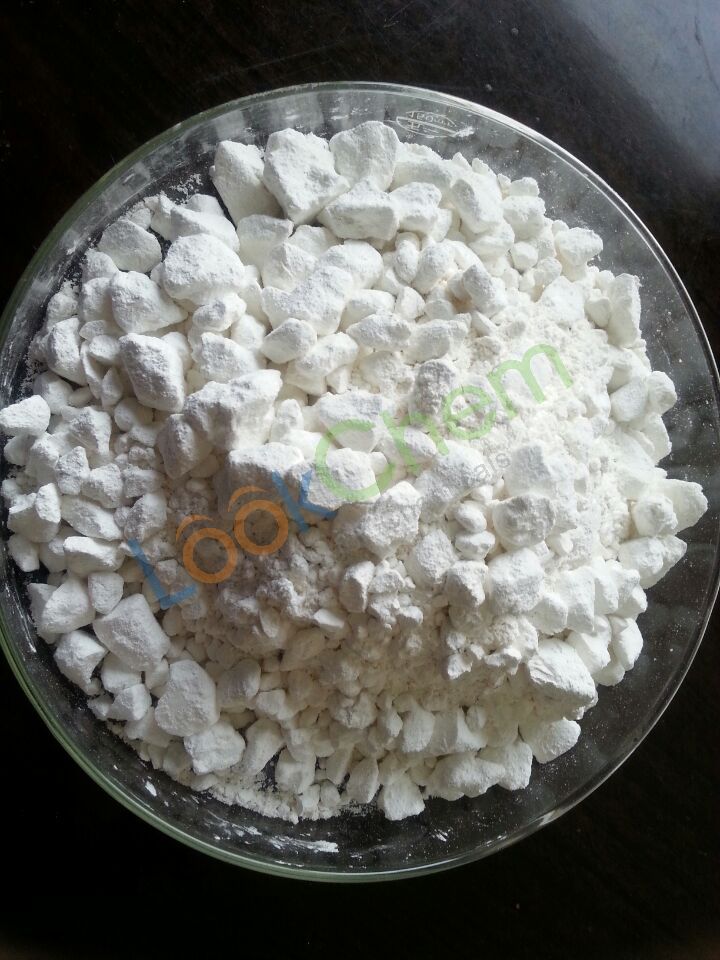- Product Details
Keywords
- 2-(4,5-dihydro-4-methyl-4-(1-methylethyl)-5-oxo-1H-imidazol-2-yl)-5-ethyl-3-pyridinecarboxylic acid
- 5-Ethyl-2-(4-isopropyl-4-methyl-5-oxo-2-imidazolin-2-yl)nicotinic acid
- (+-)-midazol-2-yl)-5-ethyl
Quick Details
- ProName: Imazethapyr
- CasNo: 81335-77-5
- Molecular Formula: C15H19N3O3
- Appearance: off-white to tan solid with a slightly...
- Application: ontrol of many major annual and perenn...
- PackAge: 25 kg paperboard barrel
- ProductionCapacity: 15 Metric Ton/Day
- Purity: ≥98.0%
- Storage: seal
- LimitNum: 0 Metric Ton
Superiority
 Low toxicity, the rat acute oral LD50 > 5, 000 mg/kg.
Low toxicity, the rat acute oral LD50 > 5, 000 mg/kg.
Imazethapyr
1.Common name :imazethapyr (BSI, ANSI, draft E-ISO, (m) draft F-ISO)
2.IUPAC name: (RS)-5-ethyl-2-(4-isopropyl-4-methyl-5-oxo-2-imidazolin-2-yl)nicotinic acid
3.Chemical Abstracts name: ( -2-[4,5-dihydro-4-methyl-4-(1-methylethyl)-5-oxo-1H-imidazol-2-yl]-5-ethyl-3-pyridinecarboxylic acid
4.CAS RN :[81335-77-5]
5.Development codes AC :263 499; CL 263 499 (both Cyanamid)
6.Mol. wt. 289.3 M.f. C15H19N3O3 Form Colourless crystals. M.p. 169-173 ºC B.p. Decomp. 180 °C V.p. <0.013 mPa (60 ºC) KOW logP = 1.04 (pH 5), 1.49 (pH 7), 1.20 (pH 9) (all 25 ºC) S.g./density 1.10-1.12 (21 °C) Solubility In water 1.4 g/l (25 ºC). In acetone 48.2, methanol 105, toluene 5, dichloromethane 185, dimethyl sulfoxide 422, isopropanol 17, heptane 0.9 (all in g/l, 25 ºC). Stability Rapidly degraded in sunlight, DT50 c. 3 d. pKa pKa1 2.1, pKa2 3.9
7.Mol. wt. :306.4
8.M.f. :C15H22N4O3
|
COMMON NAME |
Imazethapyr 98% TC
|
CAS NO |
81335-77-5 |
|
CATEGORY |
Herbicides
|
FORMULATION |
C16H13CLF3NO4 |
|
PACKING |
25KG/barrel, Other suitable packing can be adopted according to the requirements of customers. |
||
|
APPLICATION |
It is applied preplant incorporated, preemergence, at cracking, and postemergence. The compound controls weeds by reducing the levels of three branched-chain aliphatic amino acids, isoleucine, leucine and valine, through the inhibition of aceto-hydroxyacid synthase, an enzyme common to the biosynthetic pathway for these amino acids. This inhibition causes a disruption in protein synthesis which, in turn, leads to an interference in DNA synthesis and cell growth. The compound is used to control grasses and broadleaved weeds including barnyardgrass, crabgrass, cocklebur, panicums, pigweeds, nightshade, mustard, smartweed, velvetleaf, jimsonweed, foxtails, seedling johnsongrass, lambsquarters, morningglory and others |
||
10.MAMMALIAN TOXICOLOGY
Oral Acute oral LD50 for male and female rats, and female mice >5000 mg/kg. Skin and eye Acute percutaneous LD50 for rabbits >2000 mg/kg; mild skin and reversible eye irritant. Inhalation LC50 for rats 3.27 mg/l air (analytical), 4.21 mg/l (gravimetric). NOEL (2 y) for rats >10 000 mg/kg diet; (1 y) for dogs >10 000 mg/kg diet (highest dose tested). Other Non-mutagenic in the Ames test. Toxicity class WHO (a.i.) III (Table 5); EPA (formulation) III
11.ECOTOXICOLOGY
Birds Acute oral LD50 for bobwhite quail and mallard ducks >2150 mg/kg. Fish LC50 (96 h) for bluegill sunfish 420, rainbow trout 340, channel catfish 240 mg/l. Daphnia LC50 (48 h) <1000 mg/l. Algae NOEL for Selenastrum capricornutum 50 mg/l. Other aquatic spp. I50 for Lemna gibba 4.38 mg/l. Bees Topical LD50 for honeybees >0.1 mg/bee. Worms I50 >10 000 mg/k
Details
Packaging & Delivery
| Packaging Detail: | 1L,5L,20L Or as your request |
| Delivery Detail: | within 15 days |
Specifications
1,cas:81335-77-5;81385-77-5
2,appearance:Light yellow to white crystalline solid, no visible foreign matter
Product Description
[COMMERCIALISATION]
History: Herbicide reported by T. Malefyt et al. (Abstr. 1984, Weed Sci. Soc. Mtg., Miami, p. 18, Abstract 49). Introduced by American Cyanamid Co (now BASF AG).
[APPLICATIONS ]
Biochemistry Branched chain amino acid synthesis (ALS or AHAS) inhibitor. Hence reduces levels of valine, leucine and isoleucine, leading to disruption of protein and DNA synthesis. Selectivity in soya benas and peanuts is attributed to rapid detoxification via hydroxylation and glycosylation (B. Tecle et al., Proc. 1997 Br. Crop Prot. Conf. - Weeds, 2, 605). Mode of Action Systemic herbicide, absorbed by the roots and foliage, with translocation in the xylem and phloem, and accumulation in the meristematic regions. Uses Control of many major annual and perennial grass and broad-leaved weeds in soya beans and other leguminous crops. Applied pre-plant incorporated, pre-emergence, or post-emergence. Phytoxicity Non-phytotoxic to soya beans and other leguminous crops, when used as directed. Formulation types SL. Selected tradenames: 'Hammer' (BASF); 'Overtop' (BASF, du Pont); 'Pivot' (BASF); 'Pursuit DG' (BASF); 'Pursuit' (BASF)
[OTHER TRADENAMES ]
'Wayup' (BASF); 'Vezir' (Herbitécnica); 'Vrilec' (Ipesa)
[MAMMALIAN TOXICOLOGY ]
Oral: Acute oral LD50 for male and female rats, and female mice >5000 mg/kg. Skin and eye: Acute percutaneous LD50 for rabbits >2000 mg/kg; mild skin and reversible eye irritant.
Inhalation: LC50 for rats 3.27 mg/l air (analytical), 4.21 mg/l (gravimetric).
NOEL (2 y): for rats >10 000 mg/kg diet; (1 y) for dogs >10 000 mg/kg diet (highest dose tested).
WHO hazard class: III (Table 5)
Other: Non-mutagenic in the Ames test.
Toxicity class: III
[ECOTOXICOLOGY ]
Birds: Acute oral LD50 for bobwhite quail and mallard ducks >2150 mg/kg.
Fish: LC50 (96 h) for bluegill sunfish 420, rainbow trout 340, channel catfish 240 mg/l.
Daphnia: LC50 (48 h) <1000 mg/l.
Algae: NOEL for Selenastrum capricornutum 50 mg/l. Other aquatic spp. I50 for Lemna gibba 4.38 mg/l.
Bees: Topical LD50 for honeybees >0.1 mg/bee.
Worms: I50 >10 000 mg/kg.
[ENVIRONMENTAL FATE ]
Animals: In rats, following oral administration, 92% was excreted in the urine and 5% in the faeces within 24 hours. Residue levels in blood, liver, kidney, muscle, and fat tissues were <0.01 ppm after 48 hours.
Plants: Rapidly metabolised in non-susceptible plants; half-life in soya beans 1.6 days. The primary metabolic route in maize is oxidative hydroxylation at the a-carbon atom of the ethyl substituent on the pyridine ring.
Soil/Environment: Half-life in soil 1-3 months.




